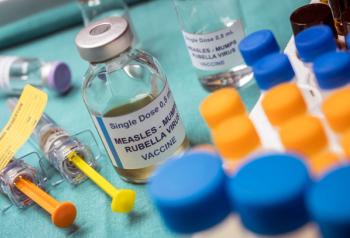
Healthcare-Associated Infections Increased in Hospitals During COVID-19 Pandemic
The pandemic caused a jump in healthcare-associated infections in hospitals, highlighting a need to return to infection prevention and control practices that were standard before the pandemic.
In the first year of the COVID-19 pandemic, there was an increase in healthcare-associated infections (HAIs) in hospitals, according to new data from the CDC.
The findings highlight a need to return to the infection prevention and control practices that were standard before the pandemic, as well as a need to build these programs to withstand future pandemics, authors wrote in a study
“The unfortunate reality is that in one year we lost nearly a decade of progress against HAIs like central line–associated bloodstream infections (CLABSIs), catheter-associated urinary tract infections (CAUTIs), methicillin-resistant Staphylococcus aureus (MRSA), and ventilator-associated events,” Ann Marie Pettis, BSN, RN, CIC, FAPIC, president of the Association for Professionals in Infection Control and Epidemiology (APIC),
The pandemic placed a burden on acute care hospitals (ACHs). From 2015 to 2019, there were consistent reductions in the standardized infection ratios for CLABSIs, CAUTIs and Clostridioides difficile infection (CDI) laboratory-identified events, as well as significant decreases in MRSA since 2010.
The researchers utilized data on events in ACHs from 2019 to 2020 reported to the National Healthcare Safety Network Patient Safety Component as of April 1, 2021. They calculated the change in infection ratios in the states with a high number of hospitalized COVID-19 patients.
There was a drop off in ACHs reporting HAI surveillance data between 2019 and the first half of 2020. As many as 88% of hospitals who reported data in 2019 for CLABSI, CAUTI, MRSA or CDI also reported data for the first half of 2020. By the second half of 2020, reporting levels were close to the pre-pandemic period for most HAIs.
Starting in the second quarter of 2020, there were initial increases in the standardized infection ratios for CLABSI and MRSA. Increases in ventilator-associated events (VAEs) started as early as the first quarter. In the third and fourth quarters, there were large and significant increases in the standardized infection ratios for CLABSI, CAUTI, VAE and MRSA.
CLABSI had the greatest increase among all HAIs. In the second half of 2020, CLABSI standardized infection ratios increased up to 47% compared with the previous year. Meanwhile, there were no significant increases for surgical site infections or CDI for any quarter of 2020 compared with 2019.
“The increased focus on hand hygiene, environmental cleaning, patient isolation, and use of [personal protective equipment] during 2020, combined with continued inpatient antimicrobial stewardship programs and a marked decline in outpatient antibiotic prescribing, may have resulted in decreases in the CDI [standardized infection ratios] during 2020 compared to 2019,” the authors suggested.
In addition to calling on healthcare facilities to reassess their own infection prevention programs, APIC highlighted that additional help is needed from the government.
“APIC also calls on federal and state governments to provide funding to help support healthcare facilities across the continuum of care to ensure that there is adequate surge capacity so that infection prevention and control measures will endure when stressed by future pandemics and disease outbreaks,” Pettis said.






















































































